Amphisarca Lists
-
Cultivation techniques of young pomegranate
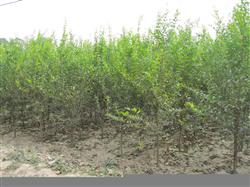
Pomegranates are light-loving, drought tolerant, barren tolerant, fruiting early and easy to manage. They are important economic tree species in mountainous areas. In the young stage, we should do a good job of the following cultivation measures: First, select good seedlings 1, select good varieties of pomegranate can be divided into sweet, sour, sour three categories, such as no special needs, in the cultivation of...
2018-09-15 -
Pollution-free pomegranate fertilization technology
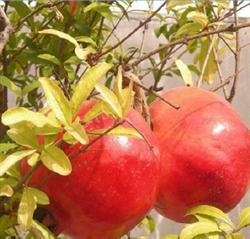
1. Five advantages of developing pomegranate production. The main results are as follows: (1) it has strong adaptability and wide cultivation area, which can be cultivated in mountainous area, hilly area or flat beach. (2) the propagation and cultivation are simple and labor-saving, and the seedlings can be cut or pressed and easy to survive; the fruit shell is hard, there are few diseases and insect pests, and there is no need for bagging protection. (3) knot.
2018-09-15 -
What is the difference between pear trees and apples in pruning
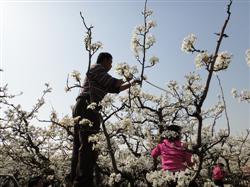
The post-anthesis management of pear trees is a critical period of annual management. Whether the comprehensive management measures are appropriate in this period directly affects the fruit setting rate and fruit quality. The main points of pear management in this period are as follows: first, pollination pear flowers generally bloom after 8 o'clock in the morning, the flowers that open on the same day can be pollinated, and it is best to pollinate for 1-2 days.
2018-09-15 -
Methods of fertilizing pear trees
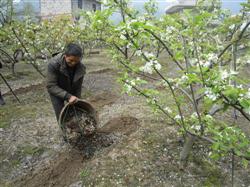
First, the amount of fertilizer applied. Generally speaking, the production of 100kg pear fruit requires 0.47kg of pure nitrogen, 0.23kg of pure phosphorus, 0.48kg of pure potassium, and the ratio of nitrogen, phosphorus and potassium is 1pur0.5. If the yield of pears is 2500 kg per mu, 11.75kg of nitrogen, 5.75kg of phosphorus and 12kg of potassium are needed per mu. In the actual production, but root.
2018-09-15 -
How to control pear scab
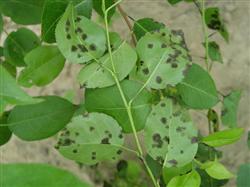
At the beginning of fruit infection, pale yellow spots were produced, and the spots were slightly depressed after expansion, with black mold. Later, the spots became cork and cracked. Its control measures: pear scab damage fruit early, spraying chemicals are 1:2:200 Bordeaux mixture;70% methyl topril WP 800~1000 times solution;50% carbendazim WP...
2018-09-15 -
Control of scab in pear trees
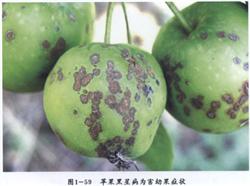
1. Strengthen the management of orchards. The growth of pear trees is weak and is easy to be infected by bacteria. Therefore, the application of fertilizer, especially organic fertilizer, can enhance the tree potential and improve the disease resistance. two。 Chemical control. About 70% of pear trees should be sprayed before flowering and about 70% of falling flowers to protect inflorescences, shoots and new leaves. In the future, according to the rainfall.
2018-09-15 -
Improved trunk shape and simplified pruning of pear trees
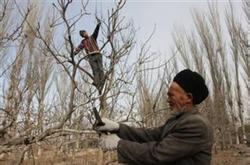
The pear tree is an improved trunk with a height of 60-70 cm and a height of 3.5 m. There are 4-5 large main branches in the middle and lower part of the central leader's trunk. The distance between the main branches is about 20 cm. The base angle of the main branch is 60 degrees. The waist angle is 30-50 degrees. The tip angle is erect; the main branch extends uniaxially. It bears small and medium-sized fruiting branches or groups of branches; the ratio of main branches to trunk is controlled.
2018-09-15 -
Pear tree rot and its control
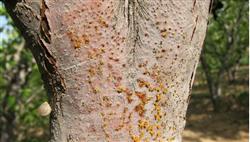
1. Disease prevention of strong trees: (1) reasonable burden: according to the growth status of the tree and the level of fertilization, determine the appropriate amount of fruit, do not let the tree burden too much, let alone take too many measures to increase fruit, such as branch pulling and ring peeling for short-term benefits. It is necessary to properly thinning flowers and fruits so that the fruit can grow without mistake. (2.
2018-09-15 -
Management techniques of Pear trees in early Spring
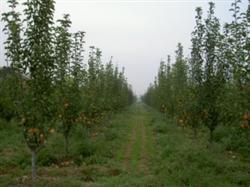
1. Dig a fixed planting hole or planting ditch. The planting hole can be dug in the pear orchard where the plant distance of ① color tree species is more than 3 meters. The planting hole can be dug into a round or square planting pit with a depth of 1 meter and a width of 1 meter, and the topsoil and core soil can be placed on both sides of the hole. ② plant distance below 2 meters in the pear orchard, to dig a fixed planting ditch, ditch depth of 1 meter,.
2018-09-15 -
Prevention and Control of Diseases and insect pests before bagging of early Spring Pear
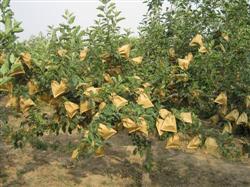
The disease and insect began to move before and after the germination of pear trees in early spring, and the bagging of pear orchards brought a lot of inconvenience to the spraying work. Therefore, pest control before bagging is the key to pest control in bagged pear orchard. In this period, we should focus on strengthening the control of pear planthopper, pear aphid, red spider and so on. (1) strengthen soil, fertilizer and water.
2018-09-15 -
Which kinds of aphids are harmful to pear trees?
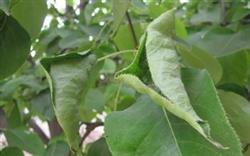
The main aphids harming pear trees are pear bifurcation aphid, pear yellow powder aphid and pear original tail aphid. These three kinds of aphids only harm pear trees, the occurrence of two aphids and yellow powder aphids are common and serious, and the original tail aphids rarely occur and the damage is mild. The morphological differences are as follows: (1) pear aphid: ① wingless female aphid 2 mm long, green.
2018-09-15 -
How to apply fertilizer reasonably to treat pear chlorosis skillfully
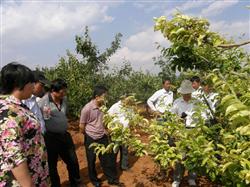
The symptom of iron deficiency of pear tree starts from the new shoot, the leaf color changes from light green to yellow, only the leaf vein remains green, the whole leaf is yellow-white when it occurs seriously, and scorched dead spots are formed at the leaf edge. The new shoots of the disease are thin and weak, the internodes are prolonged, and the axillary buds are not full, which may occur in all stages of pear trees from seedling to adult. To form this.
2018-09-15 -
How to prevent and control potassium deficiency in pear trees
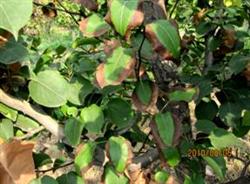
When the villagers reflected the pear orchard in a mountain village, they found that the branches of some pear trees were shortened, their leaves became smaller and yellowish green, and their leaf edges curled, browned and scorched. In serious cases, the whole leaves were like this, like a fire, especially in the trees with barren land and bare roots, which affected the tree potential and yield. Many fruit growers do it.
2018-09-15 -
Key points of management of pear orchard in spring
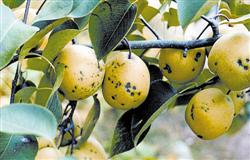
In mid-May, some fruit growers in Xinji, Shenzhou and other places found that black spots appeared in the young fruits of some pear varieties after giving medicine to pear trees, which affected the quality of the fruit. In order to investigate the causes of the blackspots, on May 22, Niqun Zhou, Shijiazhuang Fruit Research Institute, Provincial Academy of Agricultural and Forestry Sciences, Liu Jun, Jinzhou Forestry Bureau, and Xie Zhuangji, Zhao County.
2018-09-15 -
Control of pear aphid diseases and insect pests
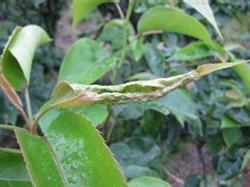
Pear aphid, also known as pear aphid, pear leaf aphid, commonly known as greasy insect. It occurs in pear areas all over the country, and it is one of the main insects of pear trees. When the damage is serious, it will cause early defoliation and affect the yield and flower bud differentiation in the same year. This insect belongs to Homoptera, Aphididae. 1. Harmful symptoms: adults, nymphs gather buds, leaves and tender shoots.
2018-09-15 -
Chemical control of small heart borer in pear
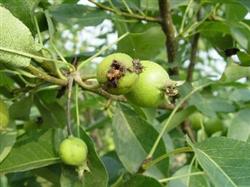
Sex attractant can be hung in the orchard, check the number of trapping insects every day, generally 15 mu of orchard can hang 1. When the number of trapped adults increases sharply, the eggs and fruits are checked every 3 days. When the egg-fruit rate reaches 0.5%-1%, chemical control can be carried out. The main agents are: 1, 20% diflubenzuron suspension or 25% diflubenzuron wettability.
2018-09-15 -
Protection against Frost injury of Pear trees in early Spring
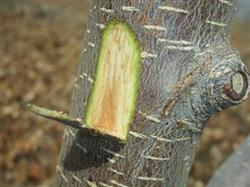
1. Prevent frost 1. Spray salt water 10-20% salt water before the arrival of night frost, which can not only increase the concentration of somatic sap, reduce the freezing point, but also increase air humidity. Water does not condense as expected to release latent heat and avoid freezing damage. 2. Spraying 0.1-0.2% green vegetable solution in early spring to inhibit germination and postpone flowering.
2018-09-15 -
The reasons for the falling flowers and fruits of plum trees
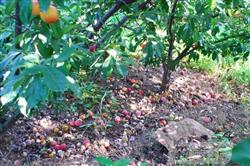
Plum trees are easy to turn into flowers, but they are often full of flowers and half fruit. More flowering, more nutrition consumption, serious fruit drop. There are generally three peaks of plum falling flowers and fruits: the first falling flower, starting from the completion of flowering, is mainly caused by anaplastic floral organ, loss of fertilization ability or unfertilized. The fruit fell for the second time.
2018-09-15 -
Management technology of plum tree flower and fruit
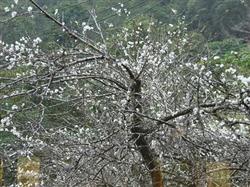
Plum tree has a large number of flowers, but the self-flowering seed-setting rate is low. In order to achieve stable and high yield, flower and fruit management is an important part of plum tree, which is mainly reflected in pollination, flower and fruit thinning, flower and fruit protection and so on. First, the most suitable time for pollination is in the early stage of flowering. Pollination should be carried out by flowers within 3 days.
2018-09-15 -
Postharvest management of Li Guo
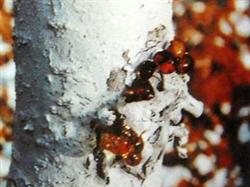
Gum disease is a common non-infectious disease in drupe fruit trees such as plum, and the incidence rate can be as high as 76% and 95%. The leaves and yellow branches of the diseased plant are weak, the tree is weak, the fruit drop is serious, and even the whole plant dies. The bark of the diseased part cracks and expands, and a soft and transparent fatty juice flows out. After oxidation, it condenses into a russet gel, which is induced by flowing glue.
2018-09-15
